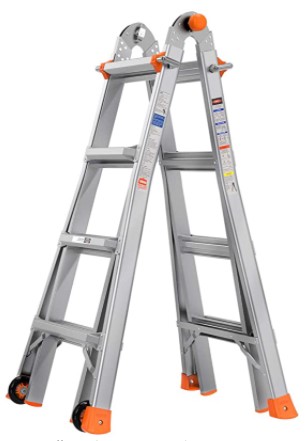A couple of years ago we started trimming our fruit trees – we have two apple trees, two cherry trees, and one pear tree. The result was a significant increase in our haul! Way more apples for Nichole’s famous pies. And a couple of 5-gallon buckets worth for friends, neighbors, or this year it seemed our bobcat friends. We even had a bear that was climbing the fence to eat a few pears and take a wee nap in our lavender patch.
Turns out – Pruning your tree is easy-peasy lemon-squeezy!
I have researched this subject extensively, even paid an arborist to come once. The gist – you can trim for “shape” or “fruit” (waves hand in a teeter-tottering motion). Turns out, trees have their energy limits. Trimming for “shape” means that you typically leave more branches for fullness than dedicated limbs for growing, which may mean less yield. I try to find a happy medium because it’s the back yard and as much as I love an ugly-duckling underdog, I like happy Dr. Zuess-looking happy fruit trees.
Tools You’ll Need
You want to generate clean cuts. Chain saws and pole saws are mostly out unless you need to take some large branches out. Here’s my arsenal:





Pruning Shears | Bypass Loppers | Pole Trimmer | Ladder | Eye Protection
Our bypass loppers have been dubbed the ‘chunka’ by our 7-year-old because, you guessed it, they “chunk” damage by lopping off big branches. For the ladder, I recommend the telescoping-extension style. My backyard is sloped and it gives me lots of options to maneuver my way in, around, and up the tree. Eye protection, or else eyewash is also a must!
Time to Prune
Stand back and look at your tree and imagine the shape you’re going for. Now, cut!
I start at the top of the tree and lop off all the branches that stick straight up – these are also known as water sprouts, suckers, water shoots, and I’m sure more. Water sprouts are branches that are going relatively straight up and will not yield fruit — see all those spikey branches at the tops of the tree in the image below –these are sapping the energy from your tree and must be punished with the ‘chunka’ (loppers or shears work as well). I then work my way down the tree removing the water sprouts as I go.

Here’s a close up of a water sprout / sucker / water shoot that needs to be removed.

When all the water sprouts are gone, I stand back (with the help of Nichole) and try to picture that round happy tree again. Then it’s a lot of go snip, back up and admire, go snip… you get the picture.
Trees are amazingly resilient and will grow back (usually). I’ve seen trees cut back to 10-foot nubs and after a few seasons they are a full tree again.
Air Out your Round Happy Tree
I’m not a golfer, but my father says that a tree is mostly air. I thin out some of the smaller branches so that there is less chance that branches bang against each other and your precious fruit. That’s it! Easy-peasy lemon-squeezy.
While you’re at it, refresh your bug traps!
Get Rid of Apple Pests with Sticky Red Balls
Treat your Trees!
Once we get a day without so much wind I’ll be treating the trees as well. I’ve had a lot of luck keeping our fruit healthy with Sticky Red Balls and various Citrus and Fruit Sprays.





